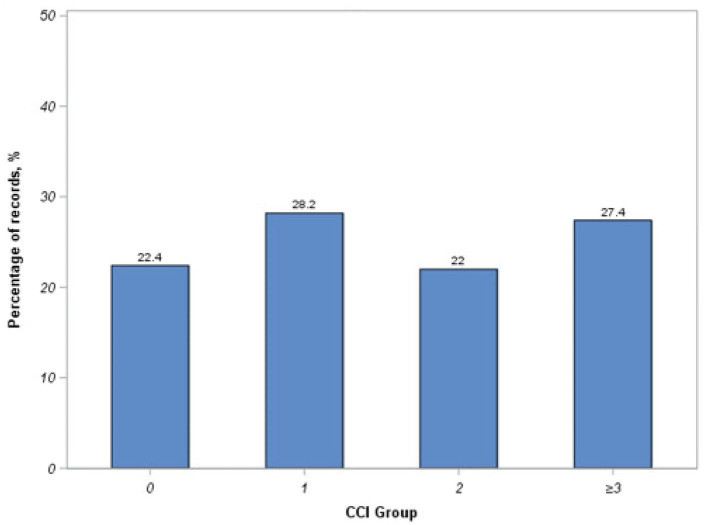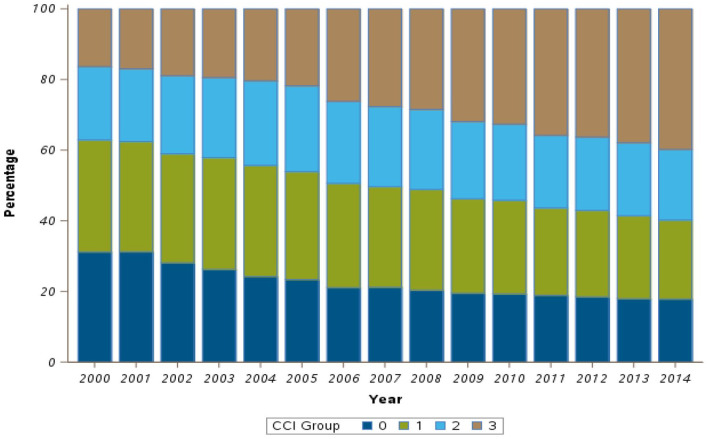合并症负担对心脏植入式电子设备结果的影响。
IF 3.3
Q2 CARDIAC & CARDIOVASCULAR SYSTEMS
Clinical Medicine Insights. Cardiology
Pub Date : 2022-06-27
eCollection Date: 2022-01-01
DOI:10.1177/11795468221108212
引用次数: 1
摘要
背景:关于合并症负担对心脏植入式电子装置(CIED)植入术患者临床结果影响的数据有限。目的:我们的目的是评估CIED植入的趋势,并探讨接受重新植入的患者的合并症负担和结果之间的关系。方法:使用2000年至2014年的国家住院患者样本数据库,我们确定了接受新生CIED手术的未满18岁的成年人。通过Charlson合并症指数(CCI)评估合并症负担,并根据其CCI评分将患者分为4类(CCI = 0, CCI = 1, CCI = 2, CCI大于或等于3)。评估年度种植趋势。采用逻辑回归来衡量分类共病负担与结局之间的关系。结果:在NIS数据库中共检索到3 103 796例重新诊断的CIED出院记录。约22.4%的CCI得分为0,28.2%的CCI得分为1,22%的CCI得分为2,27.4%的CCI得分大于或等于3。每年重新植入的CIED在2006年达到顶峰,从2010年到2014年稳步下降。与CCI 0相比,CCI小于3与院内死亡率、出血、心包和心脏并发症的几率增加独立相关(所有P结论:CCI是CIED植入后不良结果的重要预测因子。因此,在选择CIED种植体候选人时,需要考虑合并症负担。本文章由计算机程序翻译,如有差异,请以英文原文为准。



Impact of Comorbidity Burden on Cardiac Implantable Electronic Devices Outcomes.
Background: There is limited data on the impact of comorbidity burden on clinical outcomes of patients undergoing cardiac implantable electronic devices (CIED) implantation. Objectives: Our aim was to assess trends in CIED implantations and explore the relationship between comorbidity burden and outcomes in patients undergoing de novo implantations. Methods: Using the National Inpatient Sample database from 2000 to 2014, we identified adults ⩾18 years undergoing de novo CIED procedures. Comorbidity burden was assessed by Charlson comorbidity Index (CCI), and patients were classified into 4 categories based on their CCI scores (CCI = 0, CCI = 1, CCI = 2, CCI ⩾3). Annual implantation trends were evaluated. Logistic regression was conducted to measure the association between categorized comorbidity burden and outcomes. Results: A total of 3 103 796 de-novo CIED discharge records were identified from the NIS database. About 22.4% had a CCI score of 0, 28.2% had a CCI score of 1, 22% had a CCI score of 2, and 27.4 % had a CCI score ⩾3. Annual de-novo CIED implantations peaked in 2006 and declined steadily from 2010 to 2014. Compared to CCI 0, CCI ⩾3 was independently associated with increased odds of in-hospital mortality, bleeding, pericardial, and cardiac complications (all P < .05). Length of stay and hospital charges increased with increasing comorbidity burden. Conclusions: CCI is a significant predictor of adverse outcomes after CIED implantation. Therefore, comorbidity burden needs to be considered in the decision-making process for CIED implant candidates.
求助全文
通过发布文献求助,成功后即可免费获取论文全文。
去求助
来源期刊

Clinical Medicine Insights. Cardiology
CARDIAC & CARDIOVASCULAR SYSTEMS-
CiteScore
5.20
自引率
3.30%
发文量
16
审稿时长
8 weeks
 求助内容:
求助内容: 应助结果提醒方式:
应助结果提醒方式:


